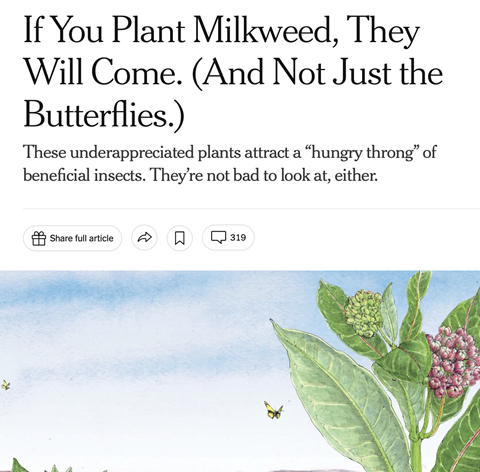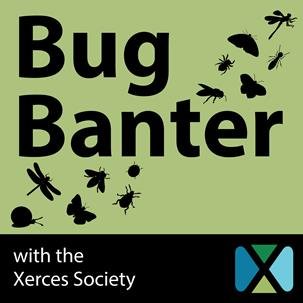Saying Goodbye to One Project...But Making Room for Others!
Plus, a big thank you to all our 2023 volunteers, donors, and partners for everything you made possible this year.
After completing three years of region-wide rosy-finch feeder counts, this portion of our study is coming to an end. We've answered the important questions that we set out to, and we are proud of what our community of rosy-finchers has accomplished.
But this doesn't mean that rosy-finch work has ended! Our state wildlife agencies and academic partners will continue this critical research and conservation work into the future.
Celebrate with us by watching our newest film! Learn all about the project and the dedication of folks across the West to these little pink birds.
Deep gratitude to all our "rosy-finchers," the partners, volunteers, and donors who made all this work happen over the past three years. Make sure to keep logging rosy-finch sightings on apps like eBird.org or iNaturalist!
What's next for our team at Sageland Collaborative? We'll continue doing what we do best: bringing the power of community science to new projects to answer large-scale conservation questions for wildlife and lands in the West. Get a sneak peek of our upcoming projects below!
Sneak Peek: Our Upcoming Projects
While the rosy-finch project goodbye is bittersweet, we look forward to making space for new projects in the works. Stay tuned for more information in 2024!
Utah's Habitat Connectivity
Documenting Utah's Herpetofauna
Herpetofauna--amphibians and reptiles--aren't always the first wildlife you think of with restoration and conservation efforts. This project will give these special wildlife a voice with conservation decision-makers.
Expert and amateur ‘herpers’ (people who search or amphibians and reptiles) will explore potentially suitable habitats for species who need support.
Our team and partners are working on community science protocols for mapping the condition of fences and other barriers to wildlife movement across the state. Some barriers can mean not only restricted movement, but more wildlife deaths.
With information collected from volunteers like you, we'll be able to work with our partners to improve movement for migrating wildlife.
Thank You for a Great Live PC Give PC!
Park City's big day of giving was a major success! Thanks to you all, we exceeded our goal and raised $3,260 for wildlife and land conservation in the West! This supports community-based conservation work into the future. Thank you so much for your support.
Didn't get a chance to give? Make a donation on our website to support more of this work in coming years!
Thank You, 2023 Volunteers, Donors, and Partners!
A huge thank you to our community of volunteers, donors, and partners for all of your support in 2023. We were honored to celebrate with you last week, joining for food, project highlights from the year, and great company!
Check out our blog post for a recap on our thank you event and such a great year.
In the News: Latinx STEM In the Field, Milkweed in the New York Times
Sageland staff members were excited to join a Latinx STEM event in honor of Latinx and Hispanic Heritage Month, organized by board member Emmanuel Santa-Martínez.
One goal was "to raise the visibility of Latinx and Hispanic professionals in conservation and science fields, where often people don’t see this type of representation," says Santa-Martínez.
It's not too late to plant milkweed to support pollinators for next year! Check out this New York Times article to inspire you to find some fluffy seeds and get planting.
From the article: “The milkweed is a displaced citizen in its own land..."
Get Ready for Winter with Image Analysis
How do you do winter? Whether you're a more "indoorsy" cold weather type or need cozy recovery time after recreating, we've got a project for you!
Our Wasatch Wildlife Watch Project needs YOU to analyze wildlife images. Sort through our wildlife camera images, taken from across the Wasatch, to help us identify wildlife and sort the data. Plus, you get a behind-the-scenes view of what local wildlife are up to!
This work contributes to landscape-scale projects supporting wildlife migration and well-being. Your work makes a critical difference for these wildlife in a future of less habitat and climate shifts.
Sign up below to learn more and get started. Thank you so much for your help!
Team Recommendations: Sierra
Sierra is our Communications & Development Specialist who just passed her year mark on our team! Celebrate her by checking out her recommendation for this month, Bug Banter.
Sierra says, "Bug Banter is a new podcast from the Xerces Society, a science non-profit that works to protect wildlife through invertebrate conservation. If you love learning about bumblebees, butterflies, and other charismatic microfauna - you’ll love Bug Banter!"
How Are Phragmites Impacting Shorebirds?
If you’ve followed work related to Great Salt Lake, you may have heard of phragmites (a type of plant) and its impact on shorebirds. But what exactly is this impact? That’s what scientists are working to find out!
Our blog post highlights a member of our amazing community, Marlen Vazquez Garcia, who has recently started working with the Intermountain West Migratory Shorebird Survey to learn how shorebirds are being impacted by phragmites. Check out our recent interview with Garcia to learn more about this new work!
Fresh Off the Press: 2024 Calendars!
Looking for a great gift for a wildlife lover in your life (which can be yourself, by the way)?
Enjoy great wildlife photos while supporting our work by purchasing a calendar. Thank you to all the Sageland Community photographers who participated!











